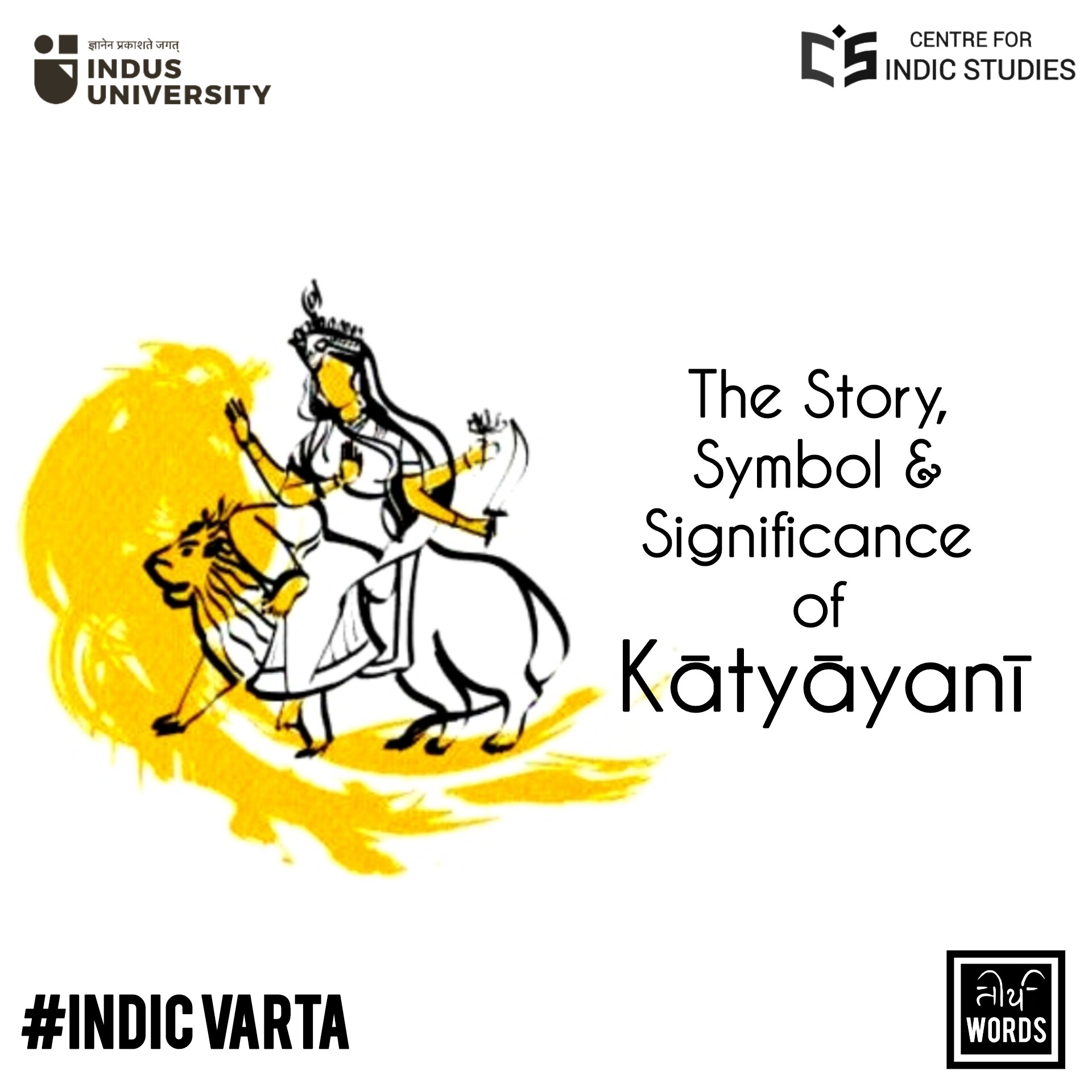- Visitor:20
- Published on:
Nothing is Everything: How Buddhism and Hinduism are Two Sides of the Same Coin – 2
In this brilliant excerpt from the famous book “Why Buddhism is True”, author Robert Wright explains through the aid of evolutionary biology and parasitology how the illusion of the clear boundary between the individual Self and the outside world breaks down. He then also discusses the implications and the meanings of ‘I’ and ‘Rest’ in such light, leading on to the differences in social thinking of Buddhism and Hinduism.

Evolution and the Bounds of Self
If you ask why kin have this near-self property, the answer is that we were created by a particular process that embodies certain values. Actually, it seems to embody one value: the successful transmission of genetic material through the generations. Since close kin share many of our genes, taking care of them makes sense from natural selection’s point of view. So genes for familial empathy and familial love – and for a host of related feelings, such as familial guilt – have flourished.
In other words, our instinctive definition of what is “us” and what is “ours” is a product of the particular rules by which a particular creative process known as natural selection works.
It’s not impossible, by the way, that our species could have taken an evolutionary path that would have left us with feelings toward some birds that are reminiscent of our feelings toward kin. When two species have a form of symbiotic relationship known as mutualism – that is, they help each other – they can evolve warm feelings that sustain that relationship. Dogs seem to have coevolved with human beings, and that may help account for the fact that I’ve been accused by my children of loving our dogs as much as I love my children. I vigorously deny this allegation, but it’s true that if my dogs are in pain, I in some sense feel that pain.
 Symbiosis can also sponsor a different kind of relationship that calls into question the bounds of self. We have a symbiotic relationship with various kinds of bacteria that reside within us and that in various ways influence our moods and thoughts. Scientists have found that by replacing the gut bacteria in shy, anxious mice with bacteria from gregarious mice, they can make the shy mice gregarious. For ethical reasons, this kind of experiment isn’t done on humans, but other evidence makes it clear that in our species, too, microbes influence the mind, in part by influencing neurotransmitters. In fact, maybe it’s not too much of a stretch to say that the bacteria, kind of like that bird at the meditation retreat, send signals to my brain, even if the bacteria send their signals more subtly.
Symbiosis can also sponsor a different kind of relationship that calls into question the bounds of self. We have a symbiotic relationship with various kinds of bacteria that reside within us and that in various ways influence our moods and thoughts. Scientists have found that by replacing the gut bacteria in shy, anxious mice with bacteria from gregarious mice, they can make the shy mice gregarious. For ethical reasons, this kind of experiment isn’t done on humans, but other evidence makes it clear that in our species, too, microbes influence the mind, in part by influencing neurotransmitters. In fact, maybe it’s not too much of a stretch to say that the bacteria, kind of like that bird at the meditation retreat, send signals to my brain, even if the bacteria send their signals more subtly.
So if I routinely consider signals that are ultimately traceable to bacteria part of me, why can’t I consider signals sent by a bird part of me? Especially given that, had evolution taken a different path, involving mutualistic symbiosis between humans and that species of bird, such signals might routinely seem more like part of me?
The generic point I’m trying to make is this: lots of information impinges on my brain, and my brain decides which information it will consider part of my self and which information it won’t consider part of myself, and which information – say, the cry of an offspring – falls somewhere in between. And I take it for granted that those decisions comport with some deep metaphysical truth about what is I and what is other. But in fact my brain could have been wired in a different way, so that it interpreted this information differently, leaving me with a very different sense of the distinction between I and other.
For example, people with a condition known as mirror-touch synesthesia pretty literally share the feelings of people in their vicinity. If they see someone being touched, they feel the touch, and brain scans show much the same neuronal activity they would have if they were being touched. You can imagine a process for creating organic beings – either natural selection operating under quirky conditions or some process other than natural selection – that would make mirror-touch synesthesia the norm rather than an aberration, in which case the prevailing conception of what self means would be very different.
The point is that what things we identify with and how closely we identify with them – things both inside our skin and outside our skin – is to no small extent the result of the path that human evolution did, as a matter of fact, take. Our intuitive conception of our self and its bounds is in that sense arbitrary.

I suppose I could go further in trying to defend the validity of the experience I had at that retreat, but there’s not much point in persisting, because it’s not as if I think I have some killer argument that would convince you that a bird’s song is part of me. In fact, it’s not as if I myself go around believing that bird songs are part of me. I’m mainly just trying to convince you that the perception I had isn’t as crazy as it may have sounded. And that’s about all I can do. Attempts to truly share the experience with you will ultimately fail; as with all mystical experiences, you had to be there.
Anyway, whatever you think of my little birdsong moment, one takes away from it is that what I’ve been calling the not-self experience actually has two sides. Earlier in this book I talked about what you could call the interior version of the experience. This consists of looking “within”- at your thoughts, your feelings – and asking, “Wait a second, in what sense are these things really inherently a part of me?” This is the basic question that was asked by the Buddha in his famous discourse on not-self.
But there is also what you could call the exterior not-self experience. This consists of looking at the “outside” world – at things beyond your skin – and asking, “In what sense are these things not a part of me?” In other words, instead of asking whether the supposed contents of the self are really contents of the self, you’re asking whether the supposed bounds of the self are really bounds of the self. In one case you’re questioning your intuition that you should identify with pretty much everything “inside” you – such as feelings of pointless anxiety – and in the other case you’re questioning your intuition that you shouldn’t identify with much of anything “outside” you.
In my experience, the first question can lead to the second question. One reason it was hard to see a clear line between the tingling in my foot and the singing of the bird is that I wasn’t identifying very closely with the tingling in the first place. The disaggregation of my “self” made its contents seem more like the contents of the world beyond me; the diffuseness of my “self” made its bounds less distinct.
In that sense, there’s something like a logical progression connecting the interior and exterior versions of the not-self experience. But if there’s a kind of logic here, there’s also a kind of paradox. After all, the less sense it makes to talk about a “you” inside your skin, the less sense it would seem to make to talk about “your” continuity with the outside world. And if you take the orthodox Buddhist position that it ultimately makes no sense to talk about a “you” inside your skin, then the idea of “your” continuity with the outside world would seem to make no sense either.
Here we return to the question I sidestepped at the beginning of this chapter: When the boundary between foot and bird, between interior tingling and exterior singing, got fuzzy, did I feel like I was at one with the world, or did I feel like I was nothing – as if there was nothing “in here” to be at one with the stuff “out there”?
There are at least two reasons I’m reluctant to answer that question. One is that, to be honest, I’m not sure the experience I had aligns neatly with either option. The other reason for my reluctance is that the way you answer that question can land you in the middle of a big argument between Buddhist thinkers and Hindu thinkers – and, for that matter, a big argument between one kind of Buddhist thinker and another kind.
- 10 min read
- 0
- 0










